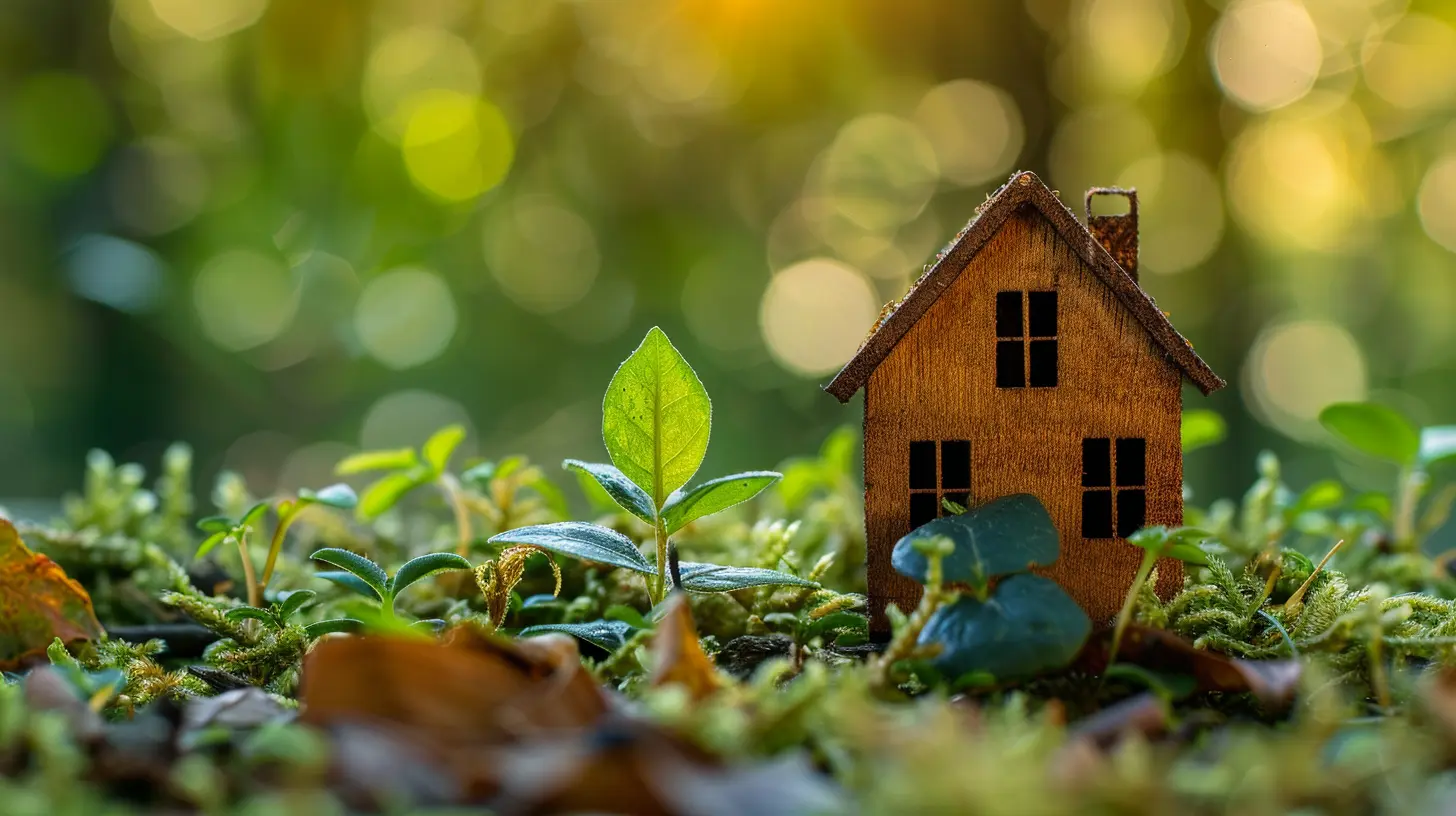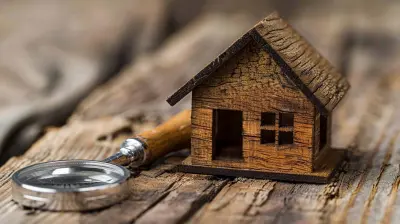The Impact of Renewable Energy on Property Value in Green Homes
7 July 2025
Ever wondered why some homes sell faster and fetch higher prices than others? Well, the secret might just lie in the power of the sun, wind, and water. Renewable energy isn't just great for the environment—it’s also a game-changer for real estate.
If you've been thinking about investing in a green home or upgrading your property with eco-friendly features, you're in the right place. In this article, we'll break down how renewable energy can send your property value soaring, make your home more attractive to buyers, and boost your savings in the long run.

What Exactly Are Green Homes?
Before we dive into the numbers, let's clear up what a "green home" really means.A green home is designed to be energy-efficient and environmentally friendly. It reduces waste, lowers carbon emissions, and often includes features like:
- Solar panels for generating electricity
- Energy-efficient appliances that cut down utility bills
- Smart thermostats that optimize heating and cooling
- High-quality insulation to keep temperatures stable
- Water-saving fixtures like low-flow toilets and showerheads
These homes prioritize sustainability, and buyers are catching on fast. In fact, a growing number of house hunters actively seek eco-friendly properties that align with their personal values and long-term savings goals.

How Renewable Energy Increases Property Value
1. Lower Utility Bills Make Homes More Attractive
Let's face it—nobody enjoys paying high utility bills. One of the biggest perks of green homes is their ability to slash electricity costs, sometimes even eliminating them entirely.Imagine buying a house where you never have to worry about rising energy bills because the sun takes care of business for you. That’s a major selling point!
According to studies, homes with solar panels sell for 4-5% more than homes without them. Buyers are willing to pay extra upfront in exchange for long-term energy savings.
2. Increased Market Demand for Sustainable Living
Sustainability isn't just a buzzword anymore—it’s a movement. More and more people want to live in homes that are good for the planet and their wallets. Millennials and Gen Z, in particular, are willing to pay a premium for properties that reduce their carbon footprint.In fact, green homes often sell faster than traditional homes simply because they stand out in the market. As climate awareness grows, demand for these properties will continue to rise.
3. Government Incentives Sweeten the Deal
Who doesn’t love getting free money? Many governments offer tax credits, rebates, and incentives for homeowners who install renewable energy systems. These perks can significantly lower the initial cost of going green and further boost property value.For instance, the Federal Solar Investment Tax Credit (ITC) in the U.S. allows homeowners to deduct a percentage of their solar installation costs from their taxes. Similar programs exist worldwide, making renewable energy investments even more appealing.
4. Higher Resale Value & Future-Proof Investment
A home equipped with solar panels, energy-efficient windows, and smart home technology isn’t just a trendy choice—it’s a future-proof investment. As energy costs continue to rise, properties that rely on renewable sources will become even more desirable.A buyer looking at two similar homes is more likely to choose the one with low long-term operational costs. That means a well-maintained green home will maintain its value better over time compared to a traditional home.
5. Improved Home Ratings & Certifications
Green homes often come with certifications that boost their credibility and value. Programs such as:- LEED Certification (Leadership in Energy and Environmental Design)
- Energy Star Ratings
- Passivhaus (Passive House) Certification
These labels aren’t just fancy stickers—they prove that a home meets high standards for energy efficiency. Buyers trust these certifications and are often willing to pay more for a property that carries them.

The Role of Solar Panels in Boosting Home Value
When people think about renewable energy in homes, solar panels are usually the first thing that comes to mind—and for good reason! They offer one of the highest returns on investment when it comes to adding value to a property.Myth: Installing Solar Panels Is Too Expensive
Reality: The Long-Term Savings Outweigh the Cost
While installing solar panels does require an upfront investment, the long-term savings can be substantial. Most homeowners break even within 6-10 years, and after that, they enjoy nearly free electricity.Plus, if you generate more energy than you use, you can often sell it back to the grid, making solar panels not just a money-saver but also a potential money-maker.
Myth: Solar Panels Make Selling a Home Complicated
Reality: Solar Homes Sell Faster and for More Money
Some sellers worry that having solar panels will complicate the home sale process—especially if there's a lease agreement involved. But in truth, homes with solar panels sell 20% faster than those without them.Buyers love the idea of inheriting an energy-efficient home, especially one with already installed solar savings. It’s one less thing for them to worry about after moving in!

Other Renewable Energy Options That Add Value
While solar panels get most of the attention, they’re not the only renewable energy source that can pump up your property value.1. Wind Turbines
If you own a large plot of land, installing a small wind turbine can generate enough electricity to power your home. Though not as common as solar panels, wind energy is another fantastic option for reducing energy costs.2. Geothermal Heating & Cooling
Geothermal systems use the earth’s natural heat to regulate indoor temperatures. These systems are incredibly energy-efficient and can reduce heating and cooling costs by up to 50%.3. Rainwater Harvesting Systems
Though not technically an energy source, rainwater harvesting systems allow homeowners to cut down on water usage by collecting rainwater for irrigation, toilets, and even laundry. This adds to a home’s sustainability appeal.Challenges to Consider When Going Green
Of course, no investment is without its challenges. While renewable energy offers plenty of benefits, there are a few things to keep in mind:- Initial installation costs can be high, though incentives help offset this.
- Not all neighborhoods have high demand for green homes, so consider the local market before investing.
- Maintenance and repairs (especially for solar panels) can add expenses over time.
That said, as technology improves and green energy becomes the norm, these challenges will continue to shrink.
Final Thoughts: Is a Green Home Worth It?
Absolutely! Whether you're looking to sell your home in the near future or simply want to save on your utility bills, renewable energy can significantly boost your property's appeal and value.Buyers are becoming more eco-conscious every year, and homes equipped with sustainable features stand out in all the right ways. Plus, there's something incredibly satisfying about knowing your home isn't just a shelter but also a part of the solution for a greener planet.
So, if you're on the fence about making your home greener, take the leap—you won’t regret it!
all images in this post were generated using AI tools
Category:
Green HomesAuthor:

Lydia Hodge
Discussion
rate this article
2 comments
Marcus Bailey
Who knew saving the planet could boost property values? Green homes: where eco-friendly meets stylish living!
October 30, 2025 at 5:44 AM

Lydia Hodge
Absolutely! Eco-friendly features not only enhance sustainability but also elevate market appeal, making green homes a smart investment.
Sablethorn Larsen
Great insights on the relationship between renewable energy and property value! It's encouraging to see how green homes are becoming not only eco-friendly but also a smart investment for homeowners.
July 13, 2025 at 12:44 PM

Lydia Hodge
Thank you! I'm glad you found the insights valuable. It's exciting to see the growing recognition of green homes as both sustainable and financially beneficial!


